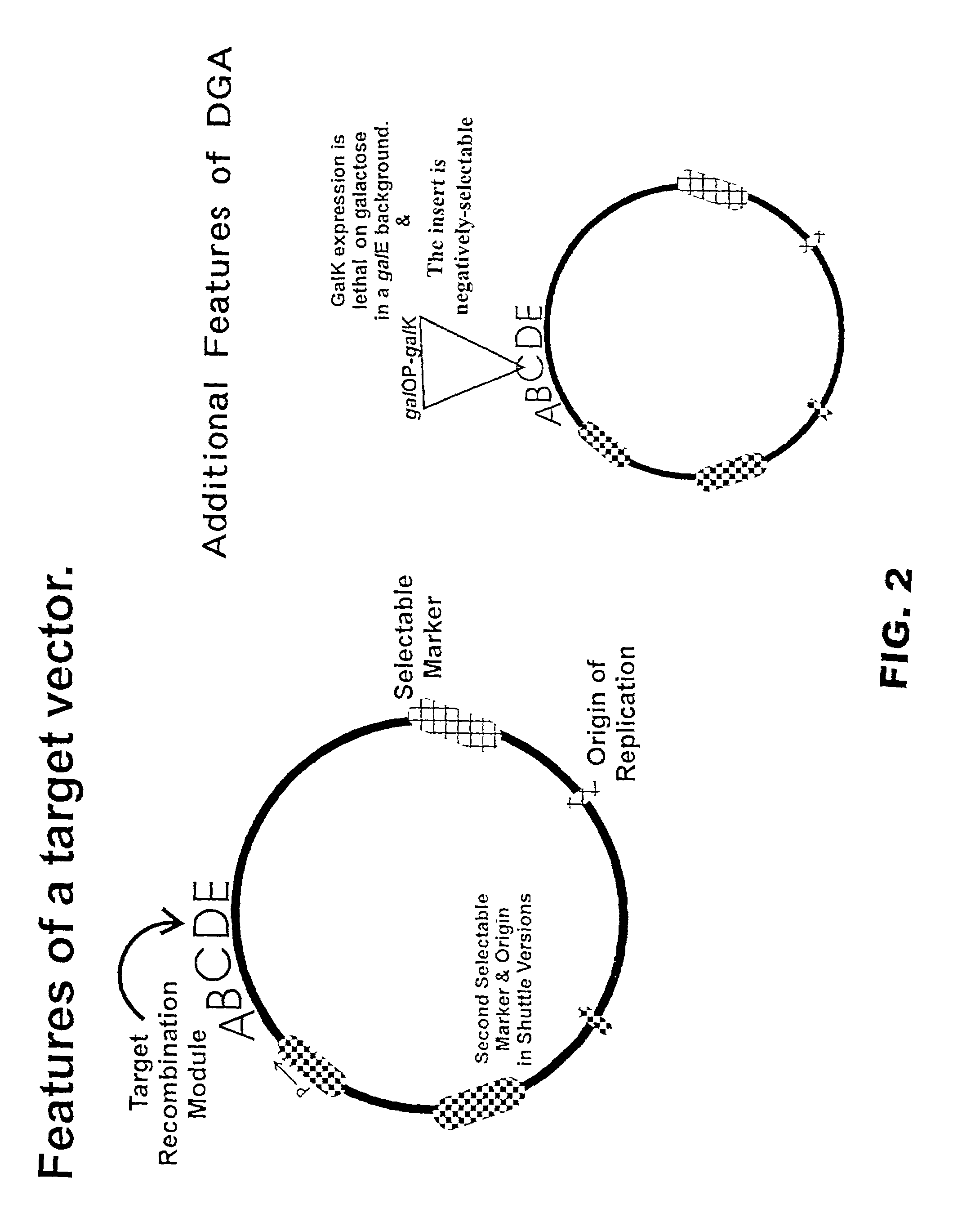Methods and compositions for directed gene assembly
a technology of directed gene and composition, applied in the field of methods and compositions for directed gene assembly, can solve the problems of complex permutation sampling, complex permutation sampling is not desirable, and lack of a powerful strategy for guiding subsequent iterative rounds
- Summary
- Abstract
- Description
- Claims
- Application Information
AI Technical Summary
Benefits of technology
Problems solved by technology
Method used
Image
Examples
Embodiment Construction
Described herein are methods and compositions for directed gene assembly ("DGA"). The DGA system can iteratively be utilized until an optimized sequence for a desired trait has "evolved". First, a target sequence of interest is subjected to a systematic process that results in variation within the target. Variation is preferably generated by conjugative transfer of donor sequences into the target cell followed by homologous recombination between a donor sequence and the target sequence, as discussed in detail herein. The present invention also encompasses the use of methods other than conjugation to transfer the donor vector into the target cell, including but not limited to transformation or phage-mediated transfer. Second, the resulting sequence variants can be subjected to a selection process in which the sequences are selected or screened for exhibition of a desired trait. One or more iterations of the DGA process can be utilized to further optimize a desired trait. The starting...
PUM
| Property | Measurement | Unit |
|---|---|---|
| extension time | aaaaa | aaaaa |
| unit length | aaaaa | aaaaa |
| resistance | aaaaa | aaaaa |
Abstract
Description
Claims
Application Information
 Login to View More
Login to View More - R&D
- Intellectual Property
- Life Sciences
- Materials
- Tech Scout
- Unparalleled Data Quality
- Higher Quality Content
- 60% Fewer Hallucinations
Browse by: Latest US Patents, China's latest patents, Technical Efficacy Thesaurus, Application Domain, Technology Topic, Popular Technical Reports.
© 2025 PatSnap. All rights reserved.Legal|Privacy policy|Modern Slavery Act Transparency Statement|Sitemap|About US| Contact US: help@patsnap.com



